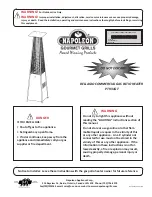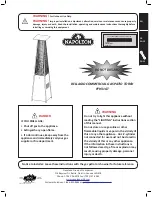
7
• The pipe must be at least one pipe size larger than the nominal outlet size of the safety device (unless its
total equivalent hydraulic resistance exceeds that of a straight pipe 9m long i.e. discharge pipes between
9m and 18m equivalent resistance length should be at least two sizes larger than the nominal outlet size of
the safety device, between 18 and 27m at least 3 times larger and so on.) Bends must be taken into account
in calculating the fl ow resistance. An alternative approach for sizing discharge pipes would be to follow the
BS6700 Specifi cation for the design installation, testing and maintenance of services supplying water for
domestic use within buildings and their curtilages.
Discharge pipework should terminate in a safe place where there is no danger to persons in the vicinity of
the discharge. Examples of acceptable discharge arrangements include:
• To a trapped gully with the outlet below a fi xed grating and above a water seal.
• Downward discharges to low level, within 100mm, above external surfaces such as a car park, hard stand-
ing, grassed area with a protective wire cage to prevent contact but retaining visibility of discharge.
• Into a metal hopper at high level with a metal downpipe and a clearly visible termination point or onto a
roof capable of withstanding high temperature discharge at least 3m away from any plastic guttering.
Building Regulation G3 allows non-metallic pipework within the tundish discharge (D2). The discharge
pipe (D2) should be made of a) metal or b) another material that has demonstrated it can safely withstand
high temperature water discharges and is clearly and permanently marked to identify the product and the
performance standard. The discharge should not be connected to a soil discharge stack unless it can be
demonstrated of safely withstanding high temperature water discharges, in which case it should;
1. Contain a mechanical seal, not a water trap, which allows water into the branch pipe but not foul drain air
to be ventilated through the tundish.
2. Be a separate branch pipe with no sanitary appliances connected to it.
3. Plastic pipes used as branch pipes with the discharge should be Polybutalene (PB) or cross linked poly-
thene (PEX) complying with national standards such as Class S of B7291-2:2006 or Class S of BS7291-3:2006
respectively.
4. Be continuously marked with a warning that no sanitary appliances should be connected to the pipe.
5. Plastic pipes should be joined and assembled with fi ttings appropriate to the circumstances in which they
are used as set out in BS EN 1043-1:2002
Queries regarding specifi c discharge arrangements should be directed to your local building control offi ce.






































